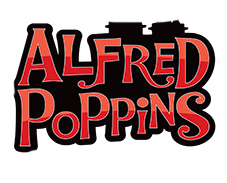The carbon footprint is already down. Wood is the Alpha-Material. Being the only 100% renewable material grown by solar power, needing very little or no irrigation, needing generally no pesticides or herbicides to grow and requiring very little disturbance of the soil over the growth cycle of the tree, it is one of the most sustainable materials. 49% of wood dries as sequestered carbon. Until it is burned or totally decomposes, the carbon is held in the wood. No other material can tell this amazing environmental story.
Like all fuels, wood is essentially carbon. Burning it emits carbon dioxide, and growing it absorbs carbon dioxide. A new tree absorbs the carbon dioxide emitted by burning an old tree. But there is a time delay of around 25 years. This is nothing compared with fossil fuels, but may be significant in the current global climate change situation. Therefore wood is not considered carbon neutral, but since trees are planted or coppice continues to grow you would only get ‘charged’ for half the emissions produced by burning it. To keep the carbon footprint down make sure your logs are sourced from local woodlands.
Wood is a renewable resource, most firewood in the UK comes from sustainable sources, so for every tree cut down another is planted, and the carbon released from the felled tree will be absorbed by another tree. Logs cut locally have not been transported long distances; this also has wide reaching environmental implications.
Woodland management contributes to the rural economy and supports local jobs. Appropriate woodland management benefits wildlife and enhances the landscape.
Both in terms of smoke and the amount of ash produced for the owner to clean up, modern wood burners are very impressive.
Even in daily use the stove should not need cleaning out more than every few weeks. In fact, a bed of ashes helps the wood to burn.
As for the emissions, many stoves are now clean enough to be legally used in urban smoke-free zones.
Burning waste wood
Since we started looking out for waste wood we have been surprised how much people throw away, we get untreated wood pallets from lots of places who are glad for us to have them as they normally have to pay for someone to take them away.
A lot of people doing up houses throw away good wood. You can use it all, as long as it’s not painted or treated. A friend is having an extension built and has saved all of the off cuts for us. Our builder even brought round all the untreated wood from a floor he had just replaced. We have also advertised in freecycle with great success.
Enormous quantities of waste wood from demolition sites, timber yards, packaging and scrap furniture are landfilled each year. Never burn painted, plastic or melamine coated wood, chipboard or MDF – these give off toxic fumes. You also have to be particularly careful with wood that has been treated for outdoor use, such as fence posts, as in the past CCA, which contains arsenic, was commonly used. You also have to avoid wood treated with halogens, chlorine, fluorine and bromine, or treated with heavy metals.
Buying logs
If you look in your local Yellow Pages, newspaper or parish magazine you’ll probably find adverts for companies that will deliver wood to you. The more locally the wood has been cut, the lower the CO2 emissions will be from the transportation. But you also need to find out some other information. The most important is whether the wood is seasoned or green. You should only burn wood there’s been cut down for a year or more as unseasoned wood may present a fire hazard or cause chimney damage but also it does not burn as well or as hot.
Other questions to ask are: is delivery included in the price? Are they selling by weight or volume and how much does it cost? (In other words, what constitutes a ‘load’). Check with your supplier whether the cost includes stacking or whether they will be up-ending a load on your driveway for you to move.
You also need to check the type of wood that you’re getting. Generally the heavier the log the longer it will burn (providing the weight isn’t due to water from unseasoned logs), you could use birch or alder to get your fire going and burning fast then mix-and-match different woods once its established and then put on oak or beech to keep going overnight.
You will definitely need kindling which you can usually get from most log merchants but also from farm shops or use small pieces of waste wood. Dried bark also works well as kindling.
In addition you could also purchase a ‘log maker’ and make your own logs from wastepaper, although be warned they take ages to dry.
Don’t forget to get your chimney swept regularly!

